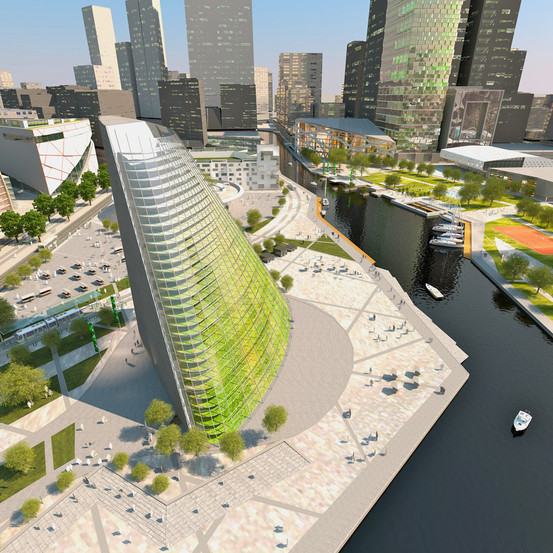Growing vegetables in the future
 Thursday, October 25, 2012 at 10:20AM
Thursday, October 25, 2012 at 10:20AM 
WSJ story about vertical farming vision from Sweden.
Goal is to make food happen while farmland disappears (to urbanization and harsh climate change) and to be able to do so year-round in a northern clime. Then there's the local food angle (less transpo, etc.).
Critics say the economics won't work at this time, especially on the energy, but advocates say this is a long-term solution that will become economical as climate change raises the price of doing business in many parts of the world, triggering global shifts in food production and - presumably - migration.
Interesting stuff.

Interesting idea. I think the notion may make some sense regarding vegetables, but I don't see either fruits (maintenance of trees too tricky) or grains (just can't get the volume).
On vegetables, they (and fruits) account for only 3% of US farmland use, which is overwhelmingly given over to wheat, corn and soybeans (and a few others). So, given that reality, vertical farming for major urban areas may make economic sense on a major scale sometime later this century.










Reader Comments (2)
I've been idly following vertical farming for a while. Thought I'd showcase a cool project being run in Chicago. Much more than just vegetables, but being done on a small scale: http://www.plantchicago.com/
Speaking of food issues and climate change I always feel the need to plug the Land Institute in KS. Doing some great work in bringing up perennial varieties of common grains to replace annuals: http://www.landinstitute.org/
Seems to me the biggest benefit to such schemes isn't the land savings so much as the climate defiance and ties into water recycling and CO2 sequestration schemes.
On the latter, think about it; take the CO2 from surrounding air or a nearby power plant, use it to speed the growth of the vegetables. The CO2 is eventually recreated when the food is digested, but the energy that would normally be pumped into transport from far away or growth in natural gas-warmed greenhouses is reduced or eliminated--CO2 never created.